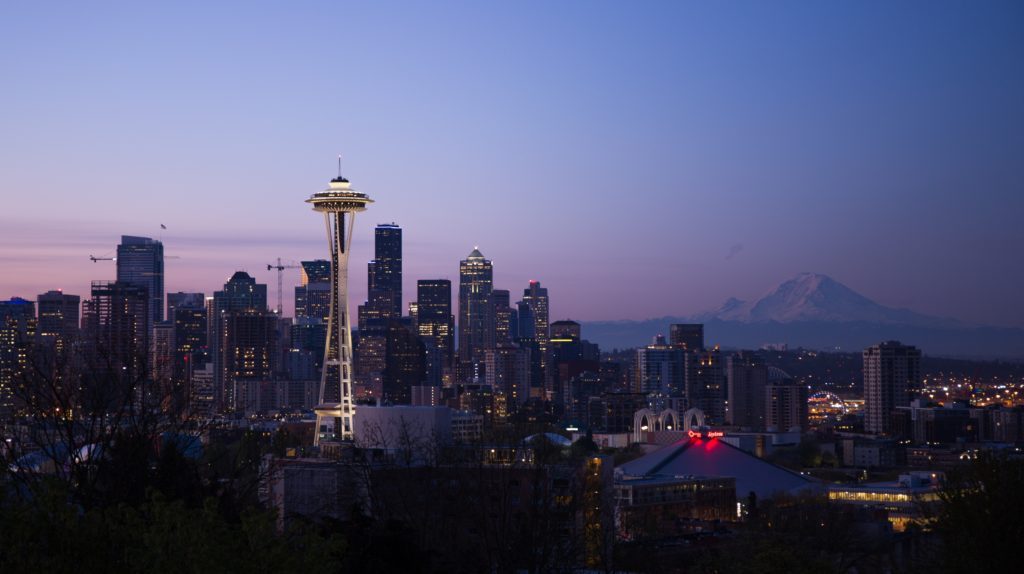Washington state opens hemp opportunities, setting up conflicts with marijuana producers
FeaturedIndustrial Hemp NewsMarijuana Laws, Regulations, & Politics July 24, 2019 MJ Shareholders 0



(A version of this story appears at MJBizDaily.com.)
A new hemp law in Washington state has marijuana growers concerned about the potential of cross-pollination from hemp fields, which could prove disastrous to their bottom line if it occurs.
Legislation expanding hemp opportunities was recently signed into law by Gov. Jay Inslee in response to the 2018 Farm Bill. Among other things, the law removed a previous 4-mile required buffer between outdoor marijuana and hemp farms.
With this change, hemp industry watchers expect a proliferation of hemp cultivation in Washington state, which has only a dozen farms compared with the 750 belonging to its southern neighbor, Oregon.
“Obviously this’ll open up the spaces where hemp cultivators can operate, and it could also have some negative impacts on the cross-pollination side,” Seattle-based marijuana and hemp attorney Daniel Shortt said.
He noted that there are more than 1,000 marijuana growers in Washington state compared to the relatively few hemp growers.
But concerns remain while hemp growers await the final law:
- Hemp fields with male and female plants could send airborne pollen into marijuana fields and cause flowering female plants to seed, which would make the marijuana flower unsellable to retail stores and less valuable for extraction.
- Will hemp farmers have the resources, including adequate labor, to remove all the male plants from their larger-scale farms? Will their day laborers and seasonal help be able to even distinguish between the two plant genders?
- Marijuana farms that cross-pollinate hemp fields could cause the hemp THC levels to spike over .3%, though the potential for such risk is small and would take another growing season for that to show up.
CBD is driving decisions
Moses Lake-based hemp farmer and consultant Cory Sharp said the majority of the hemp market currently is focused on CBD, meaning that most hemp farmers are growing females using feminized seed, the same as marijuana growers.
“The whole market is CBD-driven,” he said.
Sharp doesn’t see much risk for hemp growers who are contemplating planting hemp next to a marijuana farm.
He isn’t concerned that cross-pollination from a marijuana farm could make hemp test “hot,” or over .3% THC.
He’s more concerned about hemp farmers planting in states that have wild native hemp, or “ditchweed,” such as Kansas or Nebraska, and the potential for cross-pollination from native plants with a THC content higher than .3%.
Marijuana farmers with neighbors growing small amounts of hemp, say between 5 and 20 acres, shouldn’t be too concerned, he said.
That’s because the effort required to remove the males from smaller fields isn’t burdensome. But a hemp farmer with 200 acres will find the removal of the male plants a burden.
Regardless, Sharp will be watching closely how the fall harvest plays out.
“This harvest season is going to be interesting,” he said. “There’s going to be some fights.”
Marijuana growers hamstrung already
After the change in the law, Washington State’s Department of Agriculture and the Liquor and Cannabis Board are expected to review the potential risk for cross-pollination.
Under the first-in-time law, the farmer who was operating first likely will win a dispute.
The majority of current hemp production nationwide is geared toward the CBD market.
In 2017, about 84% of hemp was planted for CBD products, according to the 2018 Hemp & CBD Industry Factbook.
However, the small percentage of hemp farmers who grow for grain and fiber plant both male and females to encourage seed production, and those farms could have a dramatic negative impact on neighboring cannabis cultivation operations.
Shortt cautioned against jumping to conclusions about how this could affect the industry, as the final regulations have not been made public.
He expects state lawmakers could be awaiting guidance from the federal government before establishing related rules.
Shortt understands why cannabis cultivators are worried about the potential for cross-pollination in light of the struggles they’re already facing. Wholesale prices for marijuana have continuously declined since Washington state legalized recreational sales in 2014.
“It’s really competitive and difficult to successfully operate a marijuana facility, and even if (cross-pollination) could ruin one crop, that could be devastating,” he said. “When things are so competitive and the margins are so thin, it’s reasonable to be concerned over something like this.”
One county zones out hemp
Anders Taylor cultivates sun-grown marijuana in Okanogan County, a region in Washington state with several outdoor MJ farms.
He said the county zones hemp production to tribal lands only out of worries about cross-pollination and the affect it could have on marijuana cultivators.
Anticipating what was next, Okanogan’s growers worked with county commissioners so they wouldn’t be in the same position as the rest of the state if the 4-mile setback was removed.
“There are a lot of other areas in the state that are on pins and needles about where hemp farmers are going to locate,” Taylor said.
He gave this example: If a hemp grower plants 50 acres and can’t, for whatever reason, remove the male plants, the potential for cross-pollination is high to nearby marijuana farms.
“If a hemp farm is within a few miles of a marijuana farm and it’s growing a lot of male plants,” Taylor said, “it will create enough pollen to significantly damage that marijuana crop.”
The risk for cross-pollination and destruction to the marijuana grower’s field goes up considerably if the hemp farmer is growing for seed and fiber.
“That’s going to be a much worse circumstance for a marijuana farmer,” Taylor said.
Subscribe to our Newsletter
MJ Shareholders
MJShareholders.com is the largest dedicated financial network and leading corporate communications firm serving the legal cannabis industry. Our network aims to connect public marijuana companies with these focused cannabis audiences across the US and Canada that are critical for growth: Short and long term cannabis investors Active funding sources Mainstream media Business leaders Cannabis consumers










No comments so far.
Be first to leave comment below.